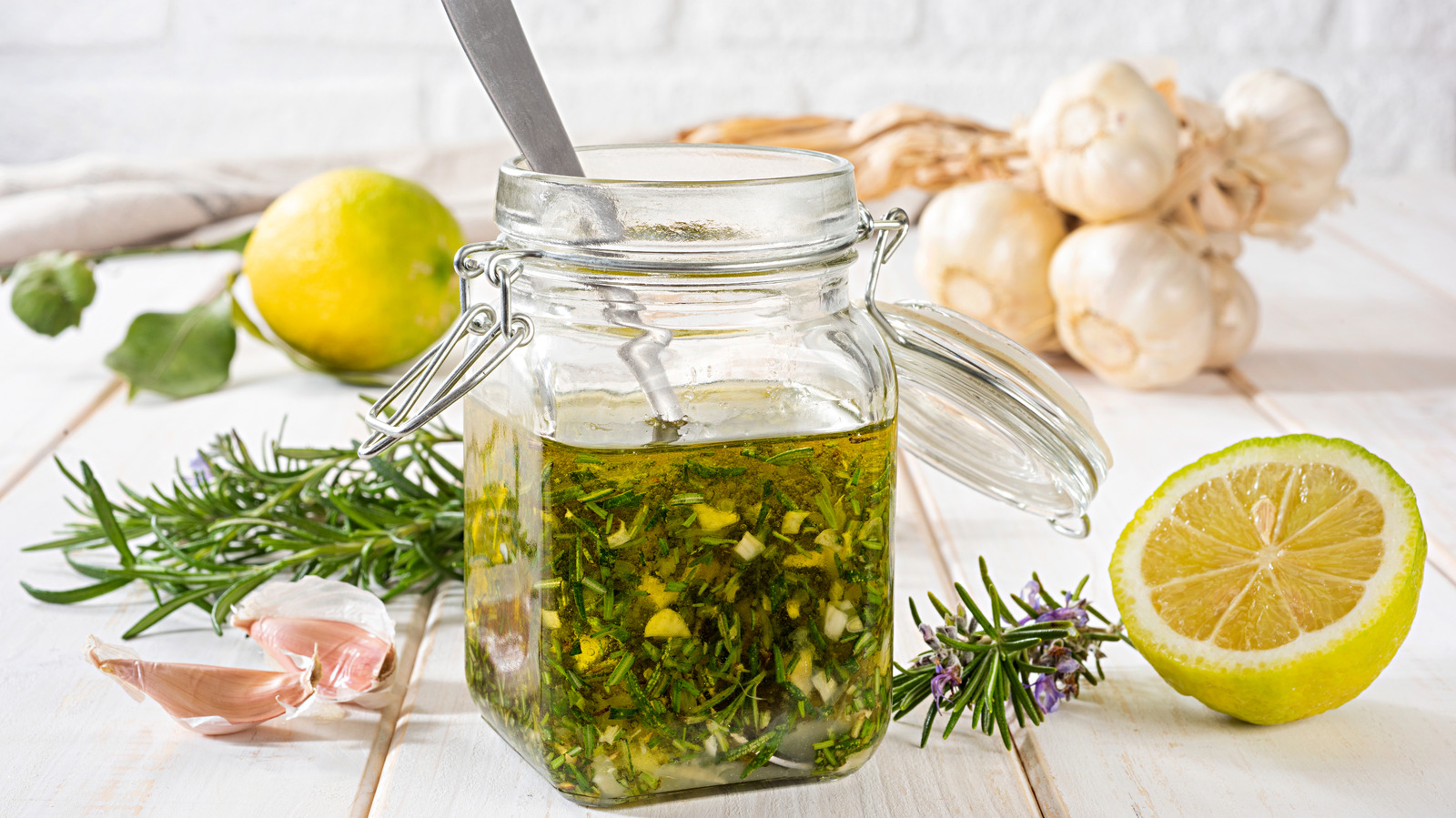Vinaigrettes are a cook’s secret weapon when it comes to creating flavorful dishes. Splashed over a bed of greens, it dresses and brightens a salad without overpowering the crisp tastes of the lettuce, cucumbers, and tomatoes. Vinaigrettes are also a game-changing secret ingredient for roasted vegetables, and they can make some of your favorite cuts of meat more tender. At its most basic, this emulsion is comprised of vinegar, olive oil, and salt. But if you really want to add a little umami to your vinaigrette, you should save the oil from your tin of anchovies and use it instead.
Anchovies are a staple if a homemade grilled chicken Caesar salad is in your meal rotation or if you like to add them to your pizza or pasta puttanesca. These little fish, which hail from the Engraulidae family, are full of flavor, and everything they touch, including the oil they’re packed in, benefits from their tasty superpower. The taste is salty with just a hint of seafood and perfect to mix into your vinaigrette.
How to add anchovy oil to vinaigrette
Make your vinaigrette recipe as you normally would, but add a little bit of your saved anchovy oil to it. You are going to want to use some restraint here. Because anchovy oil, along with its briny undertones, packs a powerful punch, you don’t want to drain the entirety of what’s in the tin into your vinaigrette. It’s best to start with a teaspoon and go from there. If you’re ready for more, grab a page from chef Andrew Zimmern, who uses a tablespoon of anchovy oil when he makes the dressing for his Caesar salad. Remember, you can always add more.
How should you store any leftover anchovy oil you want to stash away for your next vinaigrette? It’s very similar to the proper way to store canned anchovies after you’ve opened them. Keep it in an airtight container in the fridge. It will solidify as it cools, but simply bring it back to room temperature when you are ready to use it and it will return to its liquid form.






